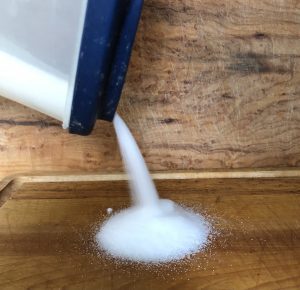It’s that time of year when the local produce starts dictating how you will spend the last weeks of your summer. Bushels and baskets of fresh fruits and vegetables line the entrance of every grocery store bursting with flavour and freshness. Can you possibly squeeze in a couple of nights of canning tomato sauce, making dills, or freezing roasted red peppers? Unfortunately, back to school shopping trips, sports try-outs, and “start of the year lessons” take priority and you quickly suppress the thought.
There is no doubt that buying a jar of your favourite dills is far easier and less time consuming than pickling your own. However, knowing what goes into them, reusing the same jars year after year, having a convenient stash, and tweaking the recipe to meet your palette preferences, can be well worth the effort of a few hours in the kitchen.
Pickling got its start in China dating back to 7000 BCE. Though food preservation was the intention, pickled or fermented foods have proven to be an important part of ‘gut’ health. Fermented foods provide the body with bacteria (probiotics) that aid digestion and boost the immune system. Though foods such as kefir, tempeh, natto, kombucha, miso, and kimchi have been given gold standard status, other parts of the world have produced their own healthy sources of fermented foods. Sauerkraut, salami, yogurt, sourdough bread, beer, wine, and olives top the list and are commonly found in the pantries of the western world. Modern day pickles, however, don’t make that list unless the pickler used the true fermenting process of soaking the cucumbers in a salt water brine. The majority of pickles made today take a shortcut by using a pre-fermented ingredient familiarly known as vinegar.
So, what’s the difference between eating pickles and eating fermented foods? The benefit of eating pickles preserved in vinegar is that you avoid the bad bacteria that can grow during the fermenting process. Fermenting produces a plethora of bacteria (good and bad) as it feeds on the natural sugars in the food. The downside of using vinegar is that it limits the variety of good bacteria that can grow due to the vinegar’s acidity. As well, the heating process that is generally required with canning pickles, further destroys more good bacteria. What’s the downside of fermenting? Time and temperature are very important to maintain safe bacterial levels and the high salt content from the brine can be toxic to a person with kidney and blood pressure issues.
But fear not! If you wish to increase your probiotics to improve your gut health, buy your fermented foods from those mentioned above and keep eating those homemade (or store bought) pickles. Catching those last few drops of vinegar in your mouth before taking a crunchy, satisfying bite is all in good health.
Here’s a quick and easy Dill Pickle recipe from Bernardin.




